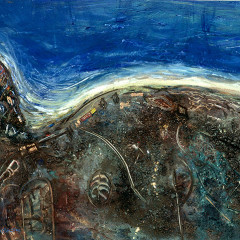RESEARCH REPORT: 1347 PROPERTY INSURANCE (PIH)
The most recent research report for T11 Capital Management's newest holding PIH is available...
IMPAIRED SOURCES OF INFORMATION ARE INCORRECTLY CREATING CONVICTION THAT WE ARE IN A BEAR MARKET
It is important to keep this one fact in mind when making any observations with regards to the financial markets at present: The predominant factor influencing thinking in the global markets currently is past pain. The current generation of market participants, be they retail investors, fund managers, analysts and journalists have only known struggle in the markets. This type of foundation for the stewards of capital and popular thinking with respect to investing creates unusually adverse reactions to downside volatility in asset prices. A vicious cycle then ensues of fearful headlines, commentary and opinions reinforcing the already existing negativity, which spirals into a black hole of irrational thinking. Against this type of backdrop you very simply have to approach information as if it is emanating from an impaired source. Otherwise, you have no chance to make the most beneficial decisions necessary to create outperformance, as you are mentally blending into unintelligible chaos. In order to discover some clarity and perspective I want to again turn to a source that too few investors bother with: The quarterly chart for the Dow going back 100 years. This chart was discussed most recently in January. Here is the chart provided in the above article: (click to enlarge) If this 16% pullback from peak to trough in the Dow is to be considered a bear market, then what would be call these? 1983 Q4 - 1984 Q2 Dow falls 17%. One year later the Dow is 24% higher at a new all-time high. 1987 Q4 Dow falls 41%. One year later the Dow is 34% higher. The Dow would be at new all-time highs in Q3 1989. 1990 Q3-Q4 Dow falls 22%. One year later the Dow is 35% higher at a new all-time high. 1997 Q3-Q4 Dow falls 16%. One year later the Dow is 31% higher at a new all-time high. 1998 Q3 Dow falls 21%. One year later the Dow is 40% higher at a new all-time high. 2015 Q2 - Present Dow falls 16% from peak to Q3 2015 low. The above are secular bull market corrections that are invariably mistaken for the start of new bear markets. Every single one of the relatively short-lived corrections listed above were accompanied by discussion of various factors leading to the start of a bear market or complete conviction that a bear market had already started. The current correction is the first of this secular bull market. To believe that we are in a bear market is to believe that all of the above highlighted corrections were bear markets, as well. Additionally, to believe we are in a bear market is presumptive,...
JANUARY CLIENT LETTER: STOCK MARKET POST-TRAUMATIC STRESS DISORDER; SOME FACTS; ADOPT A SMALL-CAP SECURITY TODAY
What follows is a section from the “Thoughts & Analysis” portion of my monthly letter to investors at T11 Capital. Stock Market Post-Traumatic Stress Disorder If you are to believe the flock of market pundits currently making the rounds then you would have no other choice but to believe that a new world order is in place. This new world order does not rely on any common sense measures of economic progress or stability but rather dwells in sorrow of past crisis situations in order to arrive at current conclusions. If you have been reading my monthly letters with some frequency then you will recall the dozen or so times I have stated that the the years between 2000-2009, marked by the dual “once in a lifetime” crisis situations of the internet bubble bursting and the mortgage debt bubble following relatively closely behind, has caused post-traumatic stress disorder to become apparent among the current generation of investors. This post-traumatic stress disorder is marked by a near obsession with calamity resembling calamities of the past decade. We have not had a pullback, macro induced or otherwise, that hasn't been a precursor to either a recession, secondary debt crisis or complete global economic collapse since the 2009 bottom. And of course the word “bubble” has now become ingrained in financial vocabulary as a means of describing anything that moves up in a straight line for a period exceeding 12 months. The point being that a majority of the analysis being pressed upon the impressionable minds of a naive and uniformed investor base, institutional or otherwise, is being formed using past traumatic experiences that incorrectly shape future expectations. This current form of thinking is not isolated by any stretch but rather an epidemic. If you are to believe this line of thinking with respect to prevailing market psychology to be true then two things become immediately apparent: Pullbacks will appear calamitous in nature as the feedback loop of past trauma induced psychology meets with current perceived negative developments in the markets. This will express itself through momentum on the downside. Pullbacks will bottom suddenly, with a majority of them being shallow in nature, as a result of a convergence of selling taking place around the same areas due to near identical mental output of a majority of participants. What we have experienced over the past few months has resulted in a pullback of some 15% from peak to trough for the S&P 500. This has been excessive for the current bull market as measured by pullbacks experienced since the 2009 bottom. The reason for the dramatic price action to the downside is that the...



